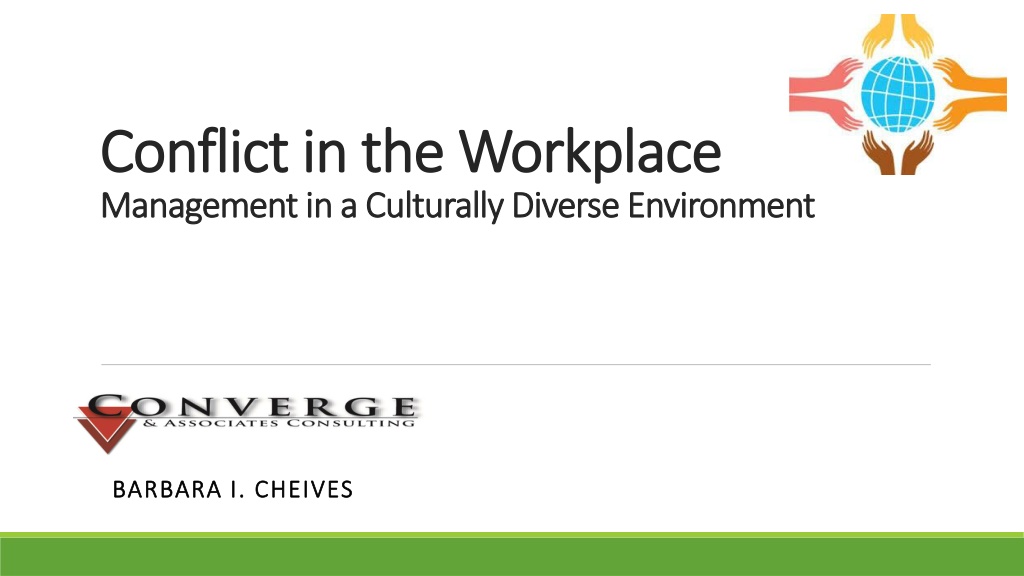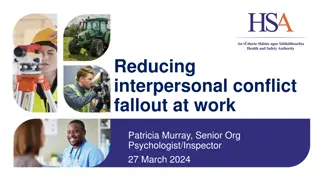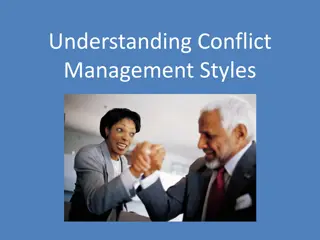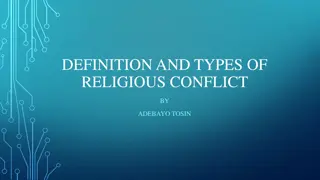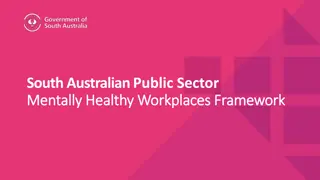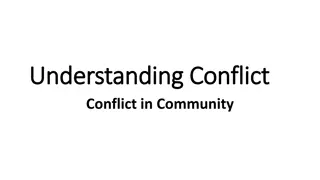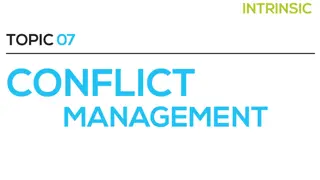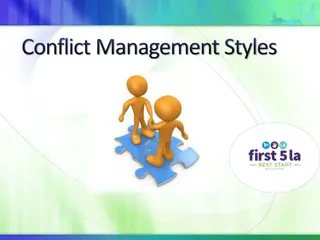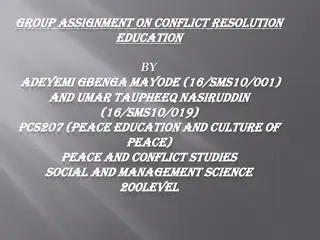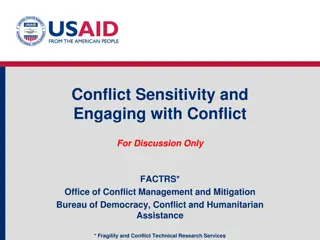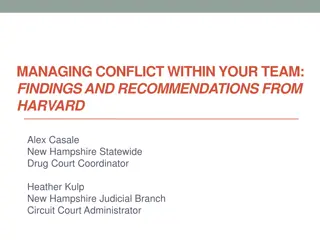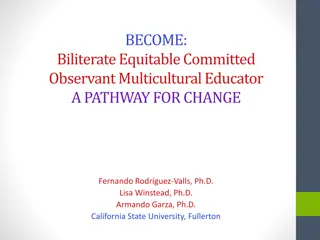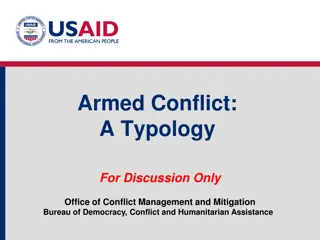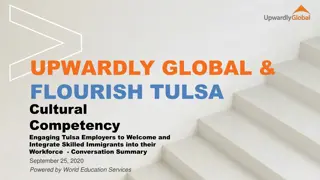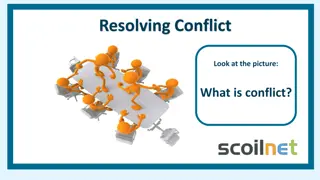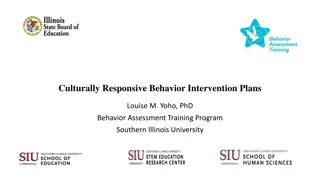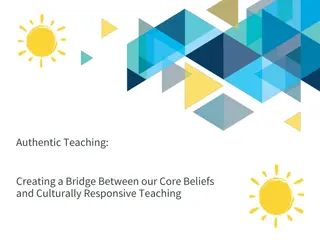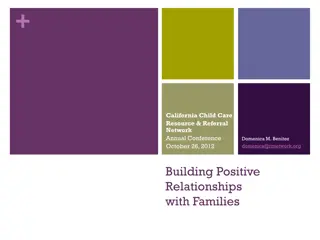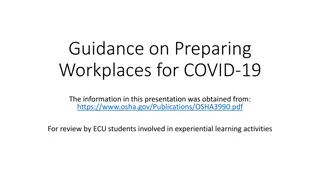Conflict in Culturally Diverse Workplaces
Explore the dynamics of conflict in culturally diverse environments, learn about common contributors to workplace conflicts, and reflect on personal messages about conflict growing up. Discover how culture influences our view of conflict management and how different styles evolve based on past experiences and observations.
Download Presentation

Please find below an Image/Link to download the presentation.
The content on the website is provided AS IS for your information and personal use only. It may not be sold, licensed, or shared on other websites without obtaining consent from the author.If you encounter any issues during the download, it is possible that the publisher has removed the file from their server.
You are allowed to download the files provided on this website for personal or commercial use, subject to the condition that they are used lawfully. All files are the property of their respective owners.
The content on the website is provided AS IS for your information and personal use only. It may not be sold, licensed, or shared on other websites without obtaining consent from the author.
E N D
Presentation Transcript
Conflict in the Workplace Conflict in the Workplace Management in a Culturally Diverse Environment Management in a Culturally Diverse Environment BARBARA I. CHEIVES BARBARA I. CHEIVES
The ultimate measure of a man is not where he stands in moments of comfort and convenience, but where he stands at times of challenge and controversy. Martin Luther King, Jr.
CONFLICT CONFLICT noun \ k n- flikt\ : a struggle for power, property, etc. : strong disagreement between people, groups, etc., that results in often angry argument : a difference that prevents agreement : disagreement between ideas, feelings, etc. Merriam Webster
Answer two questions.. 1) What messages did you learn about conflict growing up? What messages did you learn about conflict growing up? 2) Is your current style of managing conflict similar to or Is your current style of managing conflict similar to or different from what you observed/experienced growing up and different from what you observed/experienced growing up and why do you think that is? why do you think that is?
SYMPHONY BOXING MATCH MASK DESERTED ISLAND SUNRISE BRIDGE DANCE PUZZLE CACTUS PLANT STORM DREAM STORM
Common Contributors to Conflict at Work Common Contributors to Conflict at Work Ambiguous roles and responsibilities Assumptions and expectations Core values not being met Differing personal lenses and filters through which co-workers interpret the world Emotions hijacking conversations Group dynamics such as gossip and cliques Miscommunication or vague language
Culture & Conflict Culture & Conflict Our Culture forms our view of the world ..
Demographics We re becoming an increasingly diverse society This diversity means that many different cultures operate in our communities. The people that we work with represent an amazing array of diversity and cultural richness Decker, Decker & Brown, 2007
Diversity & Cultural Differences Diversity & Cultural Differences Ethnic Group, Race or Color Mental/Physical Ability National Origin Sexual Orientation and Gender Identity Gender Family/Marital Status Age Religion ..within each community
The (negative) impact of personal culture The (negative) impact of personal culture on communication on communication Incorrect assumptions about the other Language and communication style issues Biases against the unfamiliar Personal values in conflict Expectations that others will conform to established norms Adapted from Selma Myers Conflict and Culture
Organizational Culture. The integrated pattern of human behavior that includes thoughts, communication styles, actions, customs, beliefs, values and institutions to ensure that the needs of our employees are met within the context of their culturally informed world view.
Determining Conflict Style Determining Conflict Style
What is Your Conflict Style? What is Your Conflict Style?
Five Conflict-Handling Modes Competing Collaborating Assertiveness Compromising Avoiding Accommodating Cooperativeness
Try on Another Style For Size Try on Another Style For Size
How Does Nonverbal Communication Impact How Does Nonverbal Communication Impact Interactions? Interactions? Wordless communication, or body language, includes facial expressions, body movement and gestures, eye contact, posture, the tone of your voice, and even your muscle tension and breathing. The way you look, listen, move, and react to another person tells them more about how you re feeling than words alone ever can.
Effective Communication Effective Communication Effective communication helps us better understand a person or situation and enables us to resolve differences, build trust and respect, and create environments where creative ideas, problem solving and effectiveness can flourish.
Conflict Resolution Triangle Conflict Resolution Triangle Relationships Issues Emotions
The I Statements. The I Statements . I want .. I feel I would appreciate it if I think I need I understood you to say It was my understanding that I guess I misheard. Please . Perhaps I wasn t clear I d like .
Three Steps to Resolve Conflict Three Steps to Resolve Conflict STEP ONE: Agree on the Specific Conflict Go Directly to the Source Use active listening skills Each side presents point of view Listen with empathy Use I statements, not you statements Each side states which behaviors must be changed to resolve the conflict Each side shares positive statements about the other Both sides mutually agree on the specific conflict
Three Steps to Resolve Conflict Three Steps to Resolve Conflict STEP TWO: Brainstorm possible solutions Bring the Parties Together What would it take to resolve the conflict? What would each side have to do differently? Be open to new ideas, including ones never considered
Three Steps to Resolve Conflict Three Steps to Resolve Conflict STEP THREE: Come to a Resolution - Select the best solution Win/Win Win/Lose Lose/Win Lose/Lose
Fair Fighting Ground Rules Remain calm Express feelings in words not actions Be specific about the issues Deal with only one issue at a time No hitting below the belt Avoid Accusations
Fair Fighting Ground Rules Try not to generalize Avoid make believe Don t stockpile Avoid clamming up Establish additional common ground rules
Signs That Conflict at Work Is Subsiding Signs That Conflict at Work Is Subsiding Have relaxed conversations and interactions Cooperate on tasks and projects Change their word choices (for example, them becomes us ) Reduce their gossip Improve their tone of voice and relax their body language Keep their agreements Display a willingness to address new problems
Keeping The Peace Keep an eye on the situation Pick your battles Understand the WIIFM factor Correct the Problems from your level Create team building opportunities Take corrective action when necessary
In the End Conflict ; Chaos; Danger = Opportunity
Thank You For Participating !!! Thank You For Participating !!! Barbara I. Cheives Converge & Associates Consulting 1977 Brandywine Rd. Suite 203 West Palm Beach, FL 33409 barbara@convergeandassociates.com (office) 561-689-2428 (cellular) 561-351-6864
